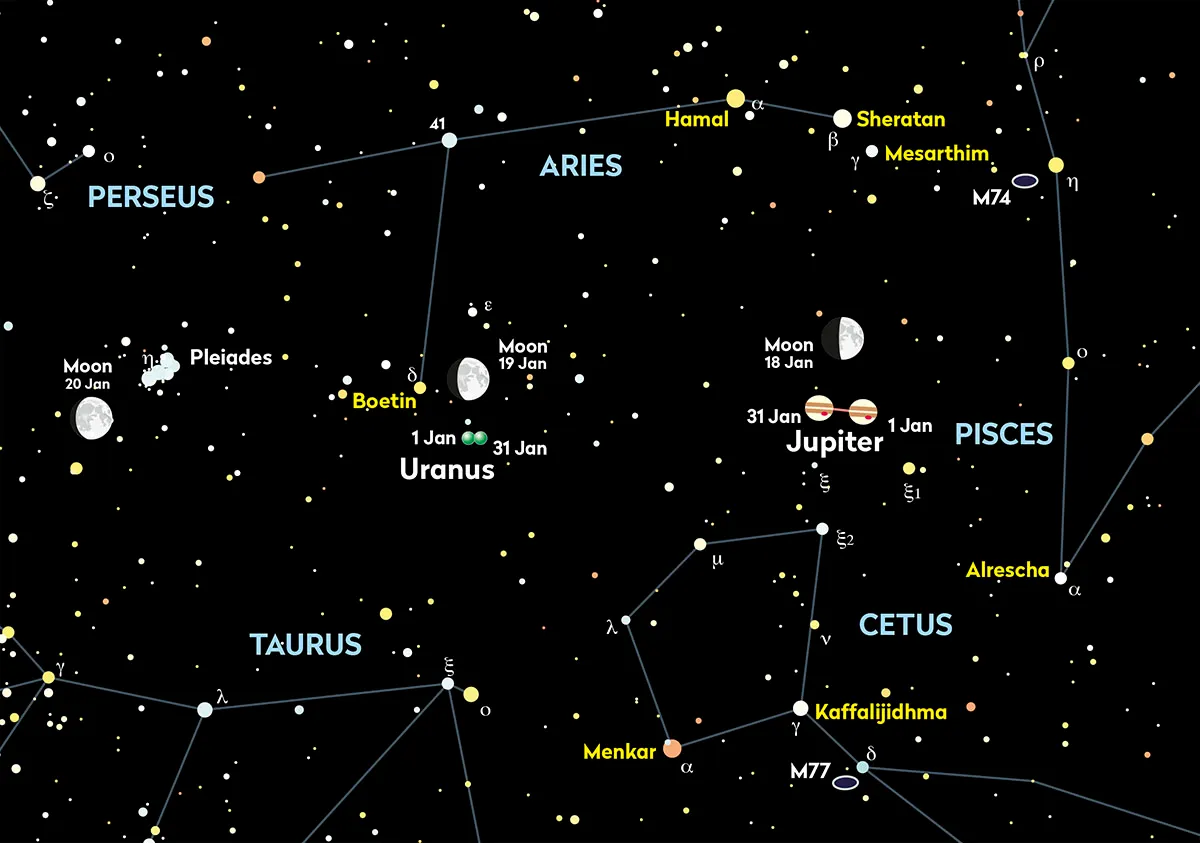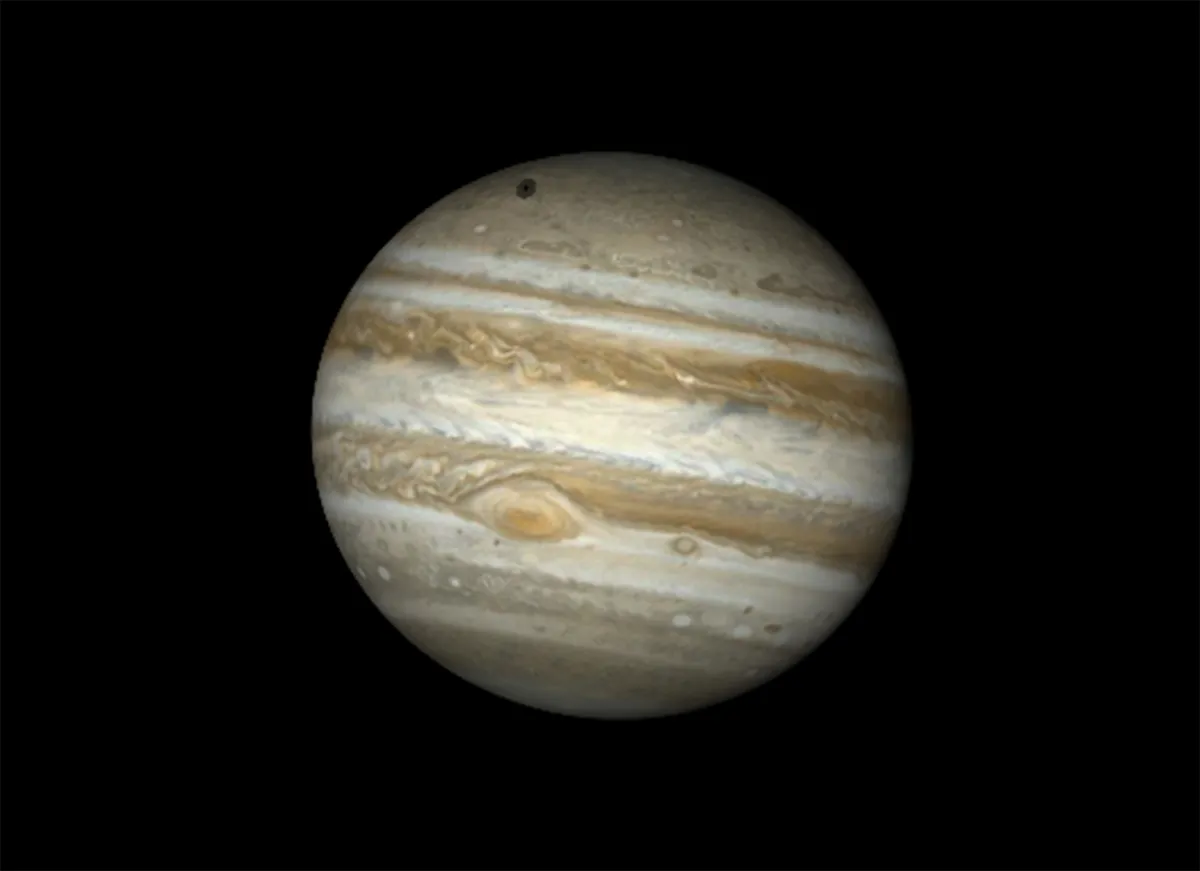Jupiter is well placed at the start of January 2024, able to reach its highest altitude under dark-sky conditions.
Shining at mag. –2.4, the planet presents a disc full of detail with an apparent diameter of 43 arcseconds.
All is going to change with Jupiter as January progresses.
Get regular stargazing advice by listening to our weekly Star Diary podcast and signing up to receive the BBC Sky at Night Magazine e-newsletter.

Jupiter January highlights
A just past first quarter, 56%-lit Moon sits 2° north-northwest of Jupiter in the early evening of 18 January.
By the last week of January, Jupiter begins to succumb to the evening twilight, the sky only becoming truly dark when Jupiter is to the west of south.
Despite this, even on 31 January Jupiter can be seen around 50° up against a deep twilight sky.
This is excellent news for visual observation as well as imaging the planet, because at this altitude it is lifted well above the turbulent atmospheric layer experienced low towards the horizon.
As a result, we’ll have a better opportunity to see finer detail within the planet’s atmosphere.

Observing Jupiter in January 2024
A small telescope shows Jupiter as a slightly oval disc, the gas giant’s rapid spin – completing one rotation about its axis in slightly under 10 hours – causing it to bulge at its equator, producing the oblate shape seen through the eyepiece.
Small scopes will also reveal larger banding within Jupiter’s atmosphere, most notably the North Equatorial Belt (NEB) and South Equatorial Belt (SEB).
A 100mm or larger scope will be needed to show the persistent storm feature known as the Great Red Spot.
Jupiter has a large number of moons, but only four that are easily seen through a small scope: the so-called Galilean moons, Io, Europa, Ganymede and Callisto.
These are fascinating to watch as they dance back and forth either side of the planet’s disc.
For more advice, read our guides on how to observe Jupiter's belts and zones and how to observe Jupiter through a telescope.

Quick facts
- Best time to see: 1 January, 19:40 UT
- Altitude: 49°
- Location: Aries
- Direction: South
- Features: Complex atmosphere, Galilean moons
- Recommended equipment: 75mm or larger telescope
This article appeared in the January 2024 issue of BBC Sky at Night Magazine
